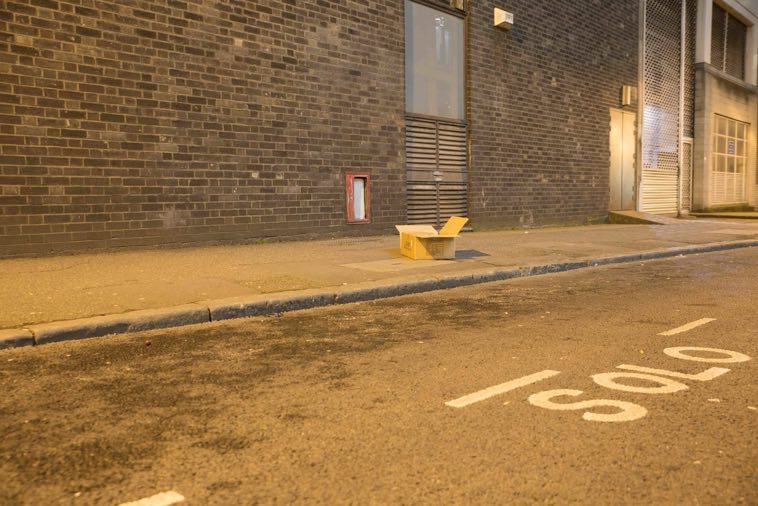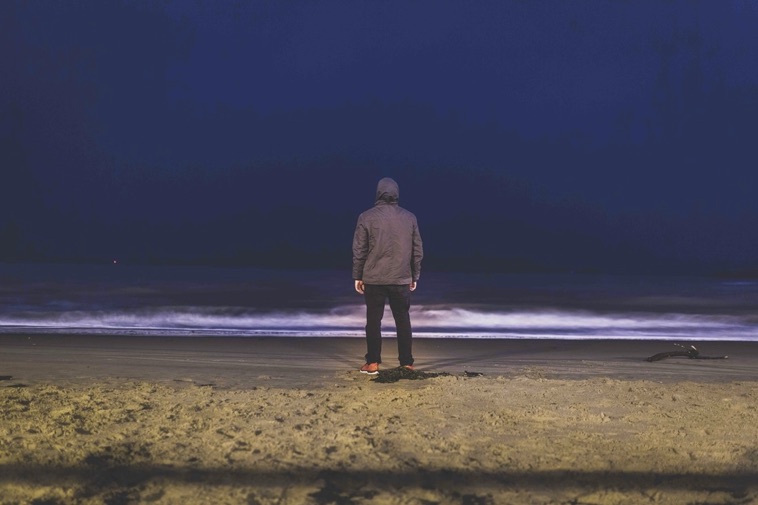Earlier in this module I took part in a collaboration with my classmate Chris Chucas whose work I’ve increasingly come to admire throughout the first weeks of this course. We had both missed the chance to collaborate during the scheduled activities but agreed to try a little side project after discussing it in the webinar that accompanied the work in week 3.
I’d been really impressed by the work produced by the other collaborators. I felt that given the constraints of time and distance separating people, everyone had produced interesting and thought-provoking images. Chris and I decided to do something together and set about deciding on the parameters of our own project.
At the outset, I have to admit that I’ve never considered myself to be a collaborative photographer, AT ALL! One of the things I value most about photography is the ability to preserve my own individual vision. In fact, it’s one of the few areas where I feel that I can express myself entirely, without having to defer to external standards or expectations. I approach all aspects of making images in a very protective way, from the way I shoot to the way I process the work.
One of the reasons to write this reflection now though, rather than a few weeks ago when it was more contemporaneous, is that one of the real revelations of this first module has been the realisation of how much of what we all do involves collaboration on some level. It’s something that I have had reason to reflect on repeatedly throughout this module and not just specifically during the work with Chris. Even in my own practice, I’ve had a long and fruitful collaboration with my printer George at Digitalarte who I have been working with for more than three years now. Not only has he taught me a lot about printing but also many other things that have fed directly into my practice and improved my work and workflow. I have had a similarly fruitful association with my framers Oaksmith Studio. I've also benefitted from the collaborative environment that my photography group members have created.
When you look at things more closely you realise that all image making is to some degree a collaboration. With your subject, with your equipment, with your audience. For me personally this has been a useful realisation, liberating me as it has to some degree from the narrow myopic viewpoint that refused to allow external light to illuminate new and better ways forward.
The project with Chris was framed simply. We would both shoot two images, in landscape format, that would ultimately be combined in some way. Our general theme was ‘loss’ or ‘being alone’ and we briefly talked about some shared inspirations. Chris had posted some lyrics up on the class forum that had got me thinking, from the song Church Street in Ruins, by Bangers:
Hearing the Beach Boys playing on this rainy high-street
Makes me chuckle at the amount of surf shops here.
I've tried, there's just no waves in this town.
Just more coffee shops that we could ever hope to drink in
And I don't care how cheap their drinks are,
I'm better off at home.
I kind of find it offensive that everything's for sale,
Coupled with the realisation that there's nothing here I need.
It's strange, I don't hate my job and I'm not living on the breadline,
But spending money still seems strange to me.
On the plus side when I'm outside I repeat mantra-like
"The last thing I need is any more things".
We spoke a bit about how we interpreted some of these thoughts and I managed to slip in a Tribe reference, because frankly there’s always room for A Tribe Called Quest!
One of the pleasures of this project for me was finding shared perspectives with someone whom I didn’t know beforehand and whose work was so different to mine. Also, the fact that by being open to others it’s possible to derive inspiration from places I wouldn’t usually find it (my knowledge of Punk is zero!). In speaking with Chris and sharing ideas I not only found affirmation of some of my own feelings but also was challenged to broaden my views and think beyond my previously perceived boundaries. Reflecting on this experience and on the output of the rest of the group, as well as the various practitioner interviews provided where people discussed how they had entered into their own collaborative relationships, I would say this is one of the real benefits of collaborative working.
We agreed on a loose deadline by which we planned to have shot our images, and I went out on the streets of East London one night after work. I was feeling really uninspired, and usually in these circumstances I would have given things up and headed home just accepting that it wasn’t my night. Having a responsibility to someone else though prevented me from doing that. Now, it wasn’t about me and my own selfish view point. I had a responsibility outside of myself, to the shared objective of our collaboration.
Images for collaboration - shot February 2017
At this point, Chris had already sent me his images (I hadn’t looked at them though), so I was even more aware of a sense of not wanting to let the side down. I think there’s a lot to be said for deriving external methods of inspiring work and a work ethic, particularly if one wishes to pursue a professional path in photography. ‘Not feeling it’ can’t be an absolute obstacle to producing work, there has to be a way to keep shooting through it, and developing a productive routine that is almost independent of notions of inspiration, is one of the benefits that collaboration might also offer. In general, that is certainly something I must do better at as the course progresses.
nother element to our collaboration was that we would process each other’s photographs. For me this was a massive step. I am super obsessive about processing, always have been, and so the act of sending my RAW files into the ether and just allowing someone else to take charge of the final presentation of my images was both incredibly daunting, but also very liberating because ultimately, no one died! And that’s a lesson in itself, that sometimes by loosening the tight grip on the reigns you might be allowing magic to happen. Another lesson for me.
Image for collaboration - Chris Chucas
Image for collaboration - Chris Chucas
The final images were put together by Chris and I was blown away by them. I’ve never presented work in a diptych before, so again that was another way in which my practice was challenged and broadened by this collaboration. Both composite and diptych have caused me to consider different ways in which I can sequence and present my work in future and I’m grateful to Chris in this regard.
Chris Chucas - Justin Carey Collaboration
Chris Chucas - Justin Carey Collaboration
Overall, both in this exercise and on reflection throughout this module, I feel that collaboration is something that is not only unavoidable, but is also a positive force that can be harnessed both to produce work that transcends individual practice but can also strengthen and develop individual perspectives. I’d certainly be open to collaborating with Chris, or other practitioners, in future. As this module draws nearly to a close, I feel I have a better idea of where I want to go with my practice and significant parts of that will involve collaborative working, whether it be in producing images or in developing work to accompany, support or discuss photographic practice.
You can see what Chris thought about our collaboration here.





